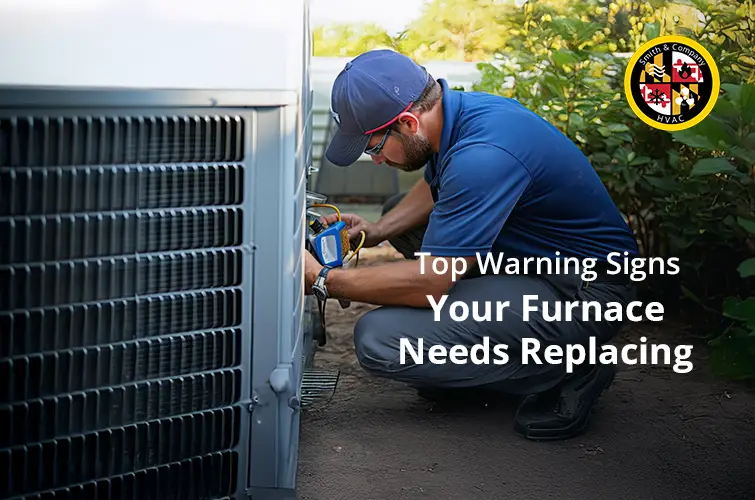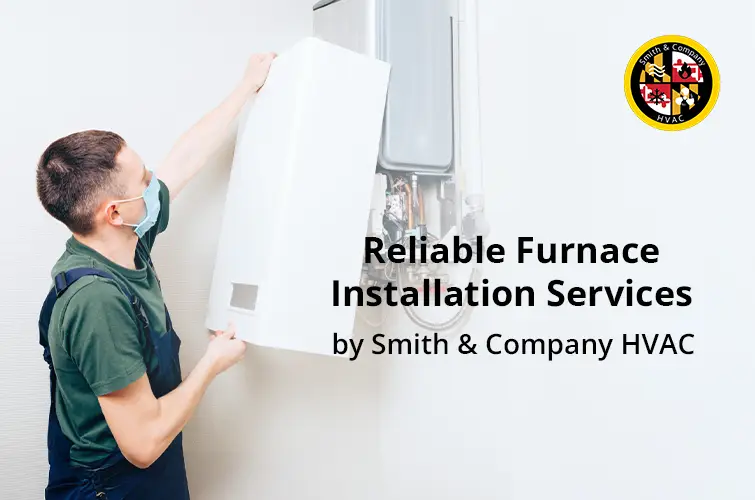
Did you know that the average furnace lasts around 15–20 years? While proper maintenance can keep your system running longer, furnaces don’t last forever. As temperatures drop, an outdated or failing furnace can lead to uneven heating, skyrocketing energy bills, and potential safety hazards.
According to the U.S. Department of Energy, upgrading to a modern, energy-efficient furnace can reduce your heating bills by 30–45%.
Knowing the signs of a failing furnace can help you act before it’s too late.
1. Rising Energy Bills Without Increased Usage
If your energy bills are climbing without a corresponding increase in usage, your furnace may be the culprit. Older furnaces lose efficiency over time, forcing them to consume more energy to provide the same level of heating. This inefficiency can be caused by worn-out components, clogged filters, or outdated technology that cannot keep up with today’s energy standards.
Replacing an inefficient furnace with a newer model improves your home’s comfort and significantly lowers your utility costs. Modern furnaces are designed with advanced features like variable-speed blowers and energy-efficient motors to ensure consistent heating without breaking the bank.
2. Frequent and Costly Repairs
If you’ve had to search for “furnace repair near me” multiple times in the past year, it’s time to reevaluate whether your system is worth saving. While occasional repairs are normal, frequent breakdowns signal that your furnace is nearing the end of its lifespan.
For example, components like the blower motor, heat exchanger, or ignition system can become unreliable after years of use. If repair costs add up to more than half the price of a new furnace, investing in a replacement is the smarter option. A new furnace eliminates the stress of constant repairs and provides reliable performance for years to come.
3. Uneven Heating Throughout the Home
Do some rooms in your house feel like a sauna while others feel like an icebox? Uneven heating is a clear sign that your furnace is struggling to distribute warm air evenly. This issue can stem from several factors, including ductwork leaks, aging furnace components, or an undersized system.
While minor ductwork repairs or adjustments may temporarily solve the issue, an outdated furnace may lack the power to heat your entire home efficiently. Upgrading to a new furnace ensures consistent temperatures throughout your living space, improving comfort and reducing energy waste.
4. Unusual Noises or Odors
Furnaces naturally produce some noise during operation, but persistent banging, rattling, or screeching sounds indicate deeper issues. These noises could signal loose components, a failing motor, or a cracked heat exchanger. Ignoring these sounds may lead to more significant damage and even complete system failure.
Similarly, unusual odors such as burning, metallic, or musty smells warrant immediate attention. These could be signs of electrical issues, gas leaks, or mold buildup in your system. If repairs don’t resolve the problem, consider furnace replacement to restore safe and efficient operation.
5. Yellow Burner Flame
A healthy furnace produces a steady blue flame. If your furnace’s burner flame is yellow or flickering, it’s a sign of incomplete combustion. This issue can lead to dangerous carbon monoxide buildup, posing a serious safety risk to your household.
Carbon monoxide is an odorless, colorless gas that can cause symptoms like headaches, nausea, and even death in severe cases. A yellow flame often indicates problems such as dirty burners, a faulty heat exchanger, or insufficient airflow. Replacing an old furnace with a modern unit equipped with safety features ensures better air quality and peace of mind.
6. Your Furnace is Over 15 Years Old
While furnaces can last beyond 15 years with diligent maintenance, their efficiency and reliability decline over time. As furnaces age, they are more prone to breakdowns and may not meet current energy standards. An aging system often lacks the advanced features that make modern furnaces more efficient and user-friendly.
If your furnace is 15 years or older, it’s wise to start planning for a replacement. Newer models with high Annual Fuel Utilization Efficiency (AFUE) ratings can save you money on energy bills while reducing your home’s carbon footprint.
7. Difficulty Maintaining Desired Temperatures
Does your home feel too cold even when the thermostat is set at a comfortable temperature? A furnace that struggles to maintain the desired temperature is likely losing its heating capacity. This issue forces the system to run longer cycles, increasing wear and energy consumption.
Replacing the furnace with a properly sized and efficient model ensures consistent heating throughout your home. Modern systems also integrate with smart thermostats for precise temperature control, further improving comfort and efficiency.
8. Signs of Rust, Cracks, or Physical Damage
Over time, furnaces are subject to wear and tear, which can lead to visible signs of damage like rust, cracks, or corrosion. These issues reduce the furnace’s performance and compromise its safety.
For instance, cracks in the heat exchanger can lead to carbon monoxide leaks, while rust on internal components can hinder proper functioning. When physical damage becomes evident, replacing the furnace is often the safest and most cost-effective solution.
9. Poor Indoor Air Quality
A failing furnace can negatively impact your home’s air quality by circulating dust, debris, and allergens. If you notice increased dust buildup, worsened allergies, or more frequent respiratory issues, your furnace may be to blame.
Newer furnaces often include advanced filtration systems that remove contaminants from the air, improving indoor air quality. Upgrading your furnace keeps your home warm and ensures a healthier living environment for your family.
10. High Humidity Levels or Dry Air
Older furnaces often struggle to regulate humidity levels, leading to excessively dry air in the winter or high humidity in the summer. These imbalances can cause discomfort, skin irritation, and even damage to wood furniture and flooring.
Modern furnaces with built-in humidity control features help maintain the ideal moisture levels in your home. If your current furnace fails to regulate humidity properly, consider replacing it with a newer model to enhance comfort and protect your home.
When to Call a Professional
Recognizing the signs of a failing furnace is the first step, but only a professional HVAC technician can determine whether repair or replacement is the best option. Schedule an inspection with a trusted provider like Smith & Company HVAC to assess your system’s condition and receive personalized recommendations.
Trust Smith & Company HVAC for All Your Heating Needs

At Smith & Company HVAC, we are based in Crownsville, MD, and offer expert furnace installation and repair services in Maryland and Washington D.C. Whether you’re searching for “furnace repair near me” or need a complete furnace replacement, our experienced technicians are ready to help.
With 24/7 emergency services and a commitment to quality, we ensure your home stays warm and comfortable all winter long. Contact us today for reliable and efficient service you can trust.
